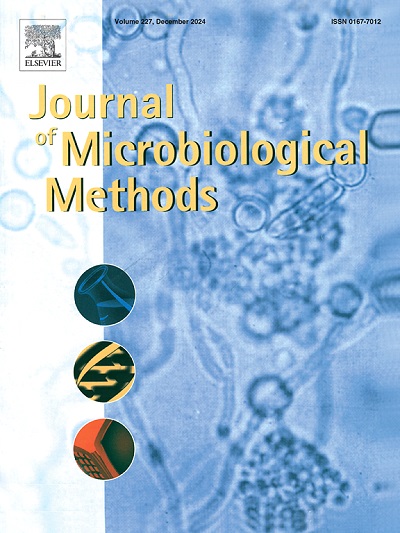I-dOne:临床相关微生物菌株鉴定领域的诊断工具。
IF 1.9
4区 生物学
Q4 BIOCHEMICAL RESEARCH METHODS
引用次数: 0
摘要
本研究评估了I-dOne是首个基于衰减全反射傅里叶变换红外光谱(ATR-FTIR)的微生物物种鉴定CE-IVD标记软件的性能,并将其结果与MALDI-TOF质谱技术(Vitek MS, biomrieux)进行了比较。临床分离菌株410株,属24属45种。I-dOne与Vitek MS具有较高的符合率(97.3% %),符合CLSI微生物鉴定精度标准。此外,本研究探索了I-dOne中区分脆弱拟杆菌(Bacteroides fragilis)和卵形拟杆菌(Bacteroides ovatus)菌株的新算法的发展,克服了目前物种水平分化的局限性。最后,研究了长时间有氧暴露下老化对ATR-FTIR谱的影响,发现长时间有氧暴露下脆弱拟杆菌菌株的光谱没有显著变化。这些发现强调了I-dOne软件在微生物鉴定中的准确性,为传统方法提供了可靠的替代方法。本文章由计算机程序翻译,如有差异,请以英文原文为准。
I-dOne: A diagnostic tool in the field of identification of clinically relevant microbial strains
This study evaluates the performance of I-dOne, the first CE-IVD marked software for microbial species identification based on Attenuated Total Reflection Fourier Transform Infrared Spectroscopy (ATR-FTIR) and compares its results with MALDI-TOF MS technology (Vitek MS, bioMérieux). A total of 410 clinical isolates were analyzed, spanning 45 species and 24 genera. I-dOne demonstrated a high agreement rate (97.3 %) with the Vitek MS, meeting CLSI standard for microbial identification accuracy. Additionally, this study explored the development of a novel algorithm within I-dOne to discriminate between Bacteroides fragilis and Bacteroides ovatus strains, overcoming the current limitations in species-level differentiation. Finally, the influence of ageing under prolonged aerobic exposure on ATR-FTIR profiles was investigated, highlighting no significant spectral changes in Bacteroides fragilis strains under prolonged aerobic exposure. These findings underscore the accuracy of I-dOne software in microbial identification, offering a reliable alternative to conventional methods.
求助全文
通过发布文献求助,成功后即可免费获取论文全文。
去求助
来源期刊

Journal of microbiological methods
生物-生化研究方法
CiteScore
4.30
自引率
4.50%
发文量
151
审稿时长
29 days
期刊介绍:
The Journal of Microbiological Methods publishes scholarly and original articles, notes and review articles. These articles must include novel and/or state-of-the-art methods, or significant improvements to existing methods. Novel and innovative applications of current methods that are validated and useful will also be published. JMM strives for scholarship, innovation and excellence. This demands scientific rigour, the best available methods and technologies, correctly replicated experiments/tests, the inclusion of proper controls, calibrations, and the correct statistical analysis. The presentation of the data must support the interpretation of the method/approach.
All aspects of microbiology are covered, except virology. These include agricultural microbiology, applied and environmental microbiology, bioassays, bioinformatics, biotechnology, biochemical microbiology, clinical microbiology, diagnostics, food monitoring and quality control microbiology, microbial genetics and genomics, geomicrobiology, microbiome methods regardless of habitat, high through-put sequencing methods and analysis, microbial pathogenesis and host responses, metabolomics, metagenomics, metaproteomics, microbial ecology and diversity, microbial physiology, microbial ultra-structure, microscopic and imaging methods, molecular microbiology, mycology, novel mathematical microbiology and modelling, parasitology, plant-microbe interactions, protein markers/profiles, proteomics, pyrosequencing, public health microbiology, radioisotopes applied to microbiology, robotics applied to microbiological methods,rumen microbiology, microbiological methods for space missions and extreme environments, sampling methods and samplers, soil and sediment microbiology, transcriptomics, veterinary microbiology, sero-diagnostics and typing/identification.
 求助内容:
求助内容: 应助结果提醒方式:
应助结果提醒方式:


